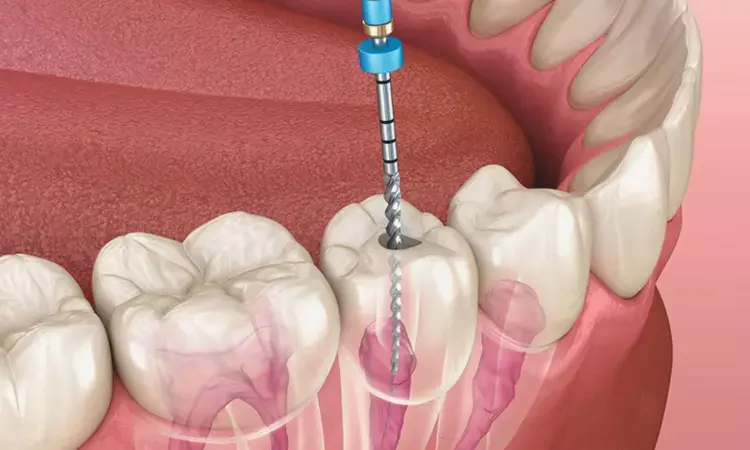- Home
- Medical news & Guidelines
- Anesthesiology
- Cardiology and CTVS
- Critical Care
- Dentistry
- Dermatology
- Diabetes and Endocrinology
- ENT
- Gastroenterology
- Medicine
- Nephrology
- Neurology
- Obstretics-Gynaecology
- Oncology
- Ophthalmology
- Orthopaedics
- Pediatrics-Neonatology
- Psychiatry
- Pulmonology
- Radiology
- Surgery
- Urology
- Laboratory Medicine
- Diet
- Nursing
- Paramedical
- Physiotherapy
- Health news
- Fact Check
- Bone Health Fact Check
- Brain Health Fact Check
- Cancer Related Fact Check
- Child Care Fact Check
- Dental and oral health fact check
- Diabetes and metabolic health fact check
- Diet and Nutrition Fact Check
- Eye and ENT Care Fact Check
- Fitness fact check
- Gut health fact check
- Heart health fact check
- Kidney health fact check
- Medical education fact check
- Men's health fact check
- Respiratory fact check
- Skin and hair care fact check
- Vaccine and Immunization fact check
- Women's health fact check
- AYUSH
- State News
- Andaman and Nicobar Islands
- Andhra Pradesh
- Arunachal Pradesh
- Assam
- Bihar
- Chandigarh
- Chattisgarh
- Dadra and Nagar Haveli
- Daman and Diu
- Delhi
- Goa
- Gujarat
- Haryana
- Himachal Pradesh
- Jammu & Kashmir
- Jharkhand
- Karnataka
- Kerala
- Ladakh
- Lakshadweep
- Madhya Pradesh
- Maharashtra
- Manipur
- Meghalaya
- Mizoram
- Nagaland
- Odisha
- Puducherry
- Punjab
- Rajasthan
- Sikkim
- Tamil Nadu
- Telangana
- Tripura
- Uttar Pradesh
- Uttrakhand
- West Bengal
- Medical Education
- Industry
Nanoparticles Could Revolutionize Endodontics-Promise and Practical Hurdles: Study

Belgium: Researchers have found in a new study that nanoparticles offer significant potential in endodontics by enhancing antibacterial and biocompatible properties compared to conventional materials. However, concerns about long-term biocompatibility, manufacturing scalability, and clinical integration remain; the review calls for focused translational research to safely and practically integrate these laboratory advances into everyday dental practice.
The scoping review, published in Discover Nano by Una Ivković and colleagues from the OMFS-IMPATH Research Group, Department of Imaging and Pathology, Faculty of Medicine, University of Leuven, Belgium, highlights the expanding role of multifunctional nanoparticles in endodontics. These nanoscale materials are being investigated for their potential to regenerate the dentin–pulp complex, enhance the mechanical and biological performance of dental materials, and act as carriers for targeted therapeutic delivery.
Following PRISMA-Scoping Review guidelines, the team conducted an extensive literature search across Web of Science, PubMed, and Scopus. Of 490 initially identified articles, 70 met the inclusion criteria after full-text review. Data from both in vitro and in vivo studies were summarized, revealing that inorganic nanomaterials dominated the research landscape, featuring in 77% of studies, while organic nanomaterials accounted for 23%.
The study revealed the following findings:
- Organic nanomaterials such as chitosan (29% of carrier applications) and extracellular vesicles (22% of therapeutic uses) showed considerable potential despite being less frequently studied.
- Among inorganic nanomaterials, bioactive glass was a leading candidate, appearing in 31% of enhancer-related studies, 26% of therapeutic studies, and 13% of carrier-focused research.
- Most applications (69% of studies) were directed toward pulp capping or root canal filling, reflecting the need for advanced materials in these procedures.
- Research models included 75% in vitro experiments using relevant cell lines and 25% animal model studies, with 18% of the latter also incorporating parallel in vitro testing.
- Nanoparticles consistently enhanced antibacterial activity and bioactivity compared with conventional endodontic materials, offering solutions to issues like reinfection and poor biological integration.
However, translating these benefits to clinical settings poses significant challenges. Current evidence is heavily based on controlled laboratory conditions that may not fully replicate the complexity of the oral environment. The authors highlight the need for more physiologically relevant models, including 3D culture systems, microfluidic tissue-on-chips, and organ-on-chips, to bridge this gap.
Future research priorities include optimizing nanoparticle formulations for specific therapeutic objectives, establishing standardized testing protocols to improve reproducibility, and expanding antibacterial evaluations to reflect the diverse microbial environment of the oral cavity. Additionally, robust clinical trials are essential to confirm real-world safety, effectiveness, and cost-efficiency.
The authors conclude that incorporating nanoparticles into endodontic practice could shift the field from a reliance on bio-inert materials to bioactive, regenerative solutions. By enabling tissue preservation, promoting healing, and facilitating targeted therapies, these innovative materials hold the potential to significantly enhance long-term outcomes for patients undergoing endodontic treatment.
Reference:
Ivković, U., Moreno-Rabié, C., Mignon, A. et al. Multifunctional nanoparticles in endodontics: applications, challenges, and future directions. Discover Nano 20, 130 (2025). https://doi.org/10.1186/s11671-025-04314-7
Dr Kamal Kant Kohli-MBBS, DTCD- a chest specialist with more than 30 years of practice and a flair for writing clinical articles, Dr Kamal Kant Kohli joined Medical Dialogues as a Chief Editor of Medical News. Besides writing articles, as an editor, he proofreads and verifies all the medical content published on Medical Dialogues including those coming from journals, studies,medical conferences,guidelines etc. Email: drkohli@medicaldialogues.in. Contact no. 011-43720751


